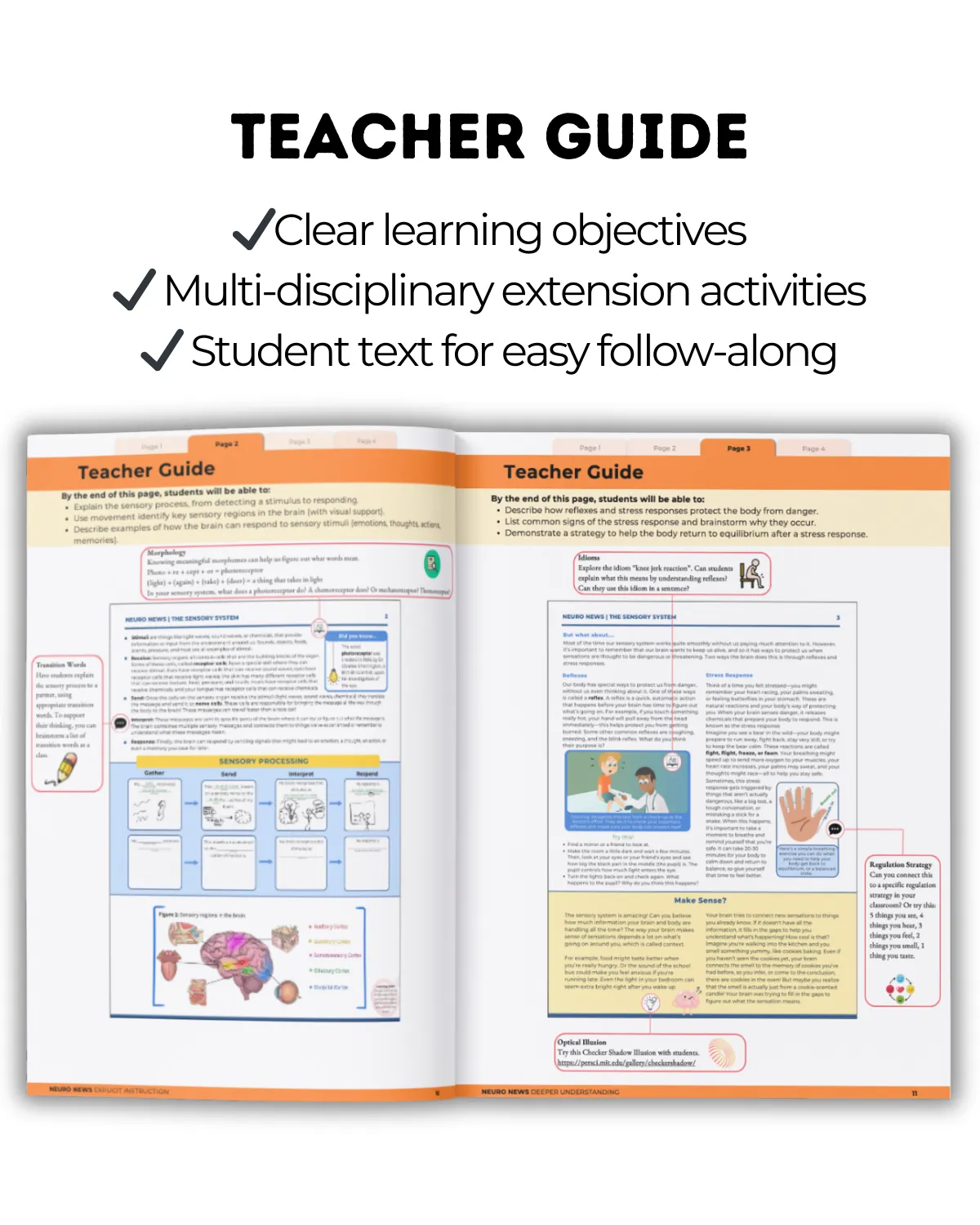Sensory System
- Designed for grades 3 through 6
- Research-based, accurate neuroscience information
- Interactive, four-page student text designed to build knowledge
- Teacher guide with student learning objectives for every page
- 9 extension activities to integrate across subjects
- 6 grab-and-go printables for hands-on, inquiry-based learning
Do you have students who work best with soft music, or those who prefer a specific seat or lighting? You probably have students who react to noisy environments differently, or need breaks to manage overwhelming sensations. This lesson explains why. Students will learn how their sensory organs—like their eyes, ears, and skin—pick up information from the world around them and send it to their brain. From reflexes that protect us to stress responses that keep us alert, sensory systems are constantly working to keep us safe and help us make decisions.
About
This lesson also teaches students to recognize and manage their sensory experiences, a skill that can help them regulate their emotions, improve focus, and make better decisions. By understanding their sensory needs, students can learn to create environments that help them feel balanced and ready to learn. It’s a practical, everyday lesson that directly impacts their ability to thrive in and outside the classroom.
Key Features
✅ Flexible & Adaptable: Use the resources when and how they fit best in your classroom.
✅ Student-Friendly Text: Engaging, accessible, and designed to build knowledge.
✅ Teacher Guide: Includes clear learning objectives, multi-disciplinary extension activities, and student text for easy follow-along.
✅ Grab-and-Go Printables: Hands-on learning activities that encourage real-world application, critical thinking, and inquiry-based exploration.
✅ Research-Backed: Links to pedagogy and neuroscience research to support educators in growing alongside their students.




